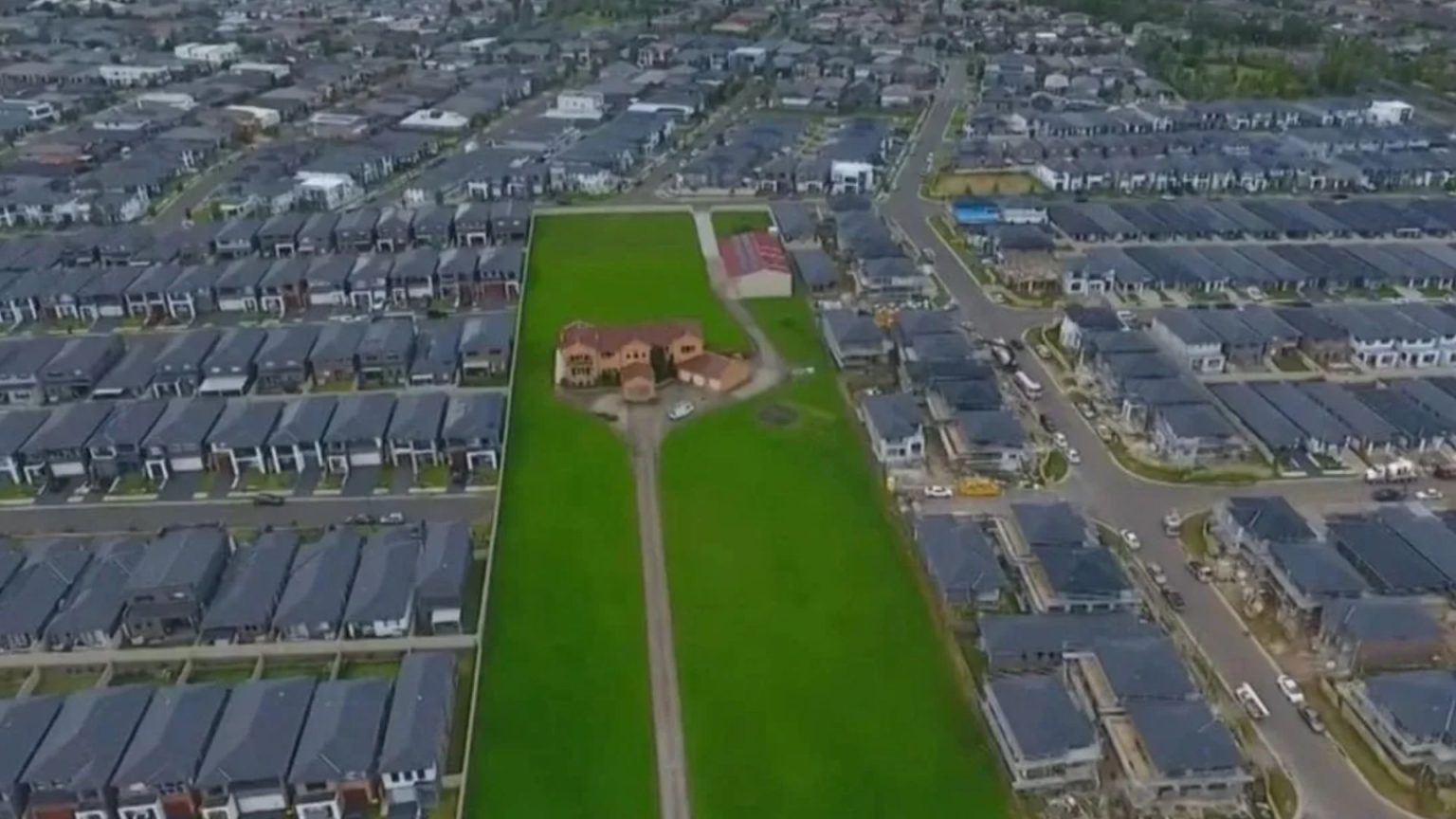The Zammit family, residing in the Quakers Hill suburb of Sydney, Australia, has steadfastly refused a lucrative offer of £25 million for their five-acre property, defying the relentless encroachment of urban development. Their home, a verdant oasis amidst a sea of grey rooftops, stands as a testament to their resilience against the pressures of modernization. The once-rural landscape of Quakers Hill has been dramatically transformed into a sprawling suburb, with the Zammits’ property remaining as the last vestige of its agricultural past. The family’s refusal to sell, despite escalating offers from developers, has sparked online speculation about potential forced acquisition through increased council rates. However, the Blacktown City Council has categorically denied any such intentions, affirming that the Zammits’ property tax rate remains consistent with neighboring residences.
The Zammit family’s property, a five-bedroom house accessed via a 100-meter long driveway, commands breathtaking views of the Blue Mountains, while remaining conveniently located just a 40-minute drive from Sydney’s bustling city center. Initially offered less than £20 million, the value of their land has skyrocketed to over £25 million, reflecting the intense demand for developable land in the area. The family’s unwavering stance against selling has garnered both admiration and speculation, with some online commentators suggesting that rising council rates could eventually force them to relinquish their prized possession. This theory, however, has been debunked by the council’s official statement, clarifying their lack of involvement in any negotiations to acquire the property.
Taylor Bredin, a local real estate agent, highlighted the potential for further development on the Zammits’ land, estimating that between 40 to 50 properties could be constructed on the five-acre plot. He commended the family’s steadfastness, noting that most other landowners had sold their properties years ago, succumbing to the allure of lucrative offers from developers. Bredin further projected that subdivided plots of 300 square meters could fetch as much as £1 million each, underscoring the immense financial potential of the Zammits’ property.
The Zammits’ story is not an isolated incident in Australia. Another family in Perth, owners of a six-acre block, similarly resisted multiple million-dollar offers from developers, their property remaining an island amidst the expanding suburbia. This Perth family, however, appears to have recently reconsidered their position, listing their four-bedroom, two-bathroom home, complete with a granny flat, for sale at a price exceeding £2 million. This demonstrates the significant financial pressures and potential rewards inherent in holding onto valuable land amidst escalating development.
The Zammit family’s resilience highlights the ongoing tension between preserving individual property rights and the relentless march of urban development. Their story serves as a compelling example of a family standing firm against external pressures, determined to retain their home and lifestyle. Their story has captivated public attention, sparking discussions about the balance between individual property rights and the broader needs of a growing city.
The Zammits’ case also underscores the significant financial implications of land ownership in rapidly developing areas. While the prospect of a £25 million windfall is undeniably tempting, the family’s decision to remain in their home reflects the intangible value they place on their property, beyond its monetary worth. Their story resonates with many who grapple with the increasing pressures of urban sprawl and the challenges of preserving community identity in the face of relentless development.











